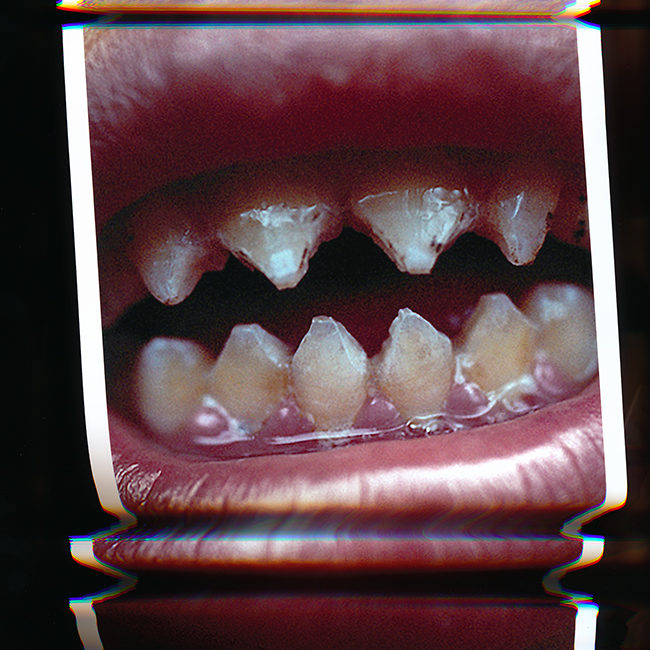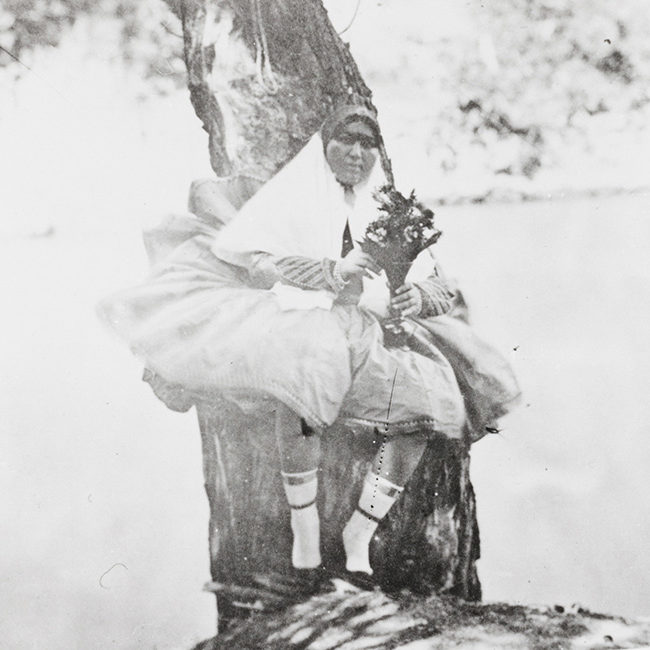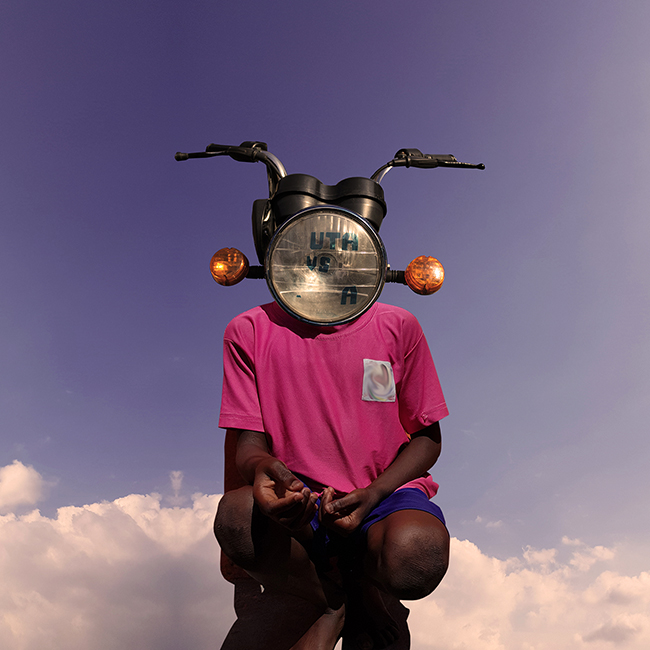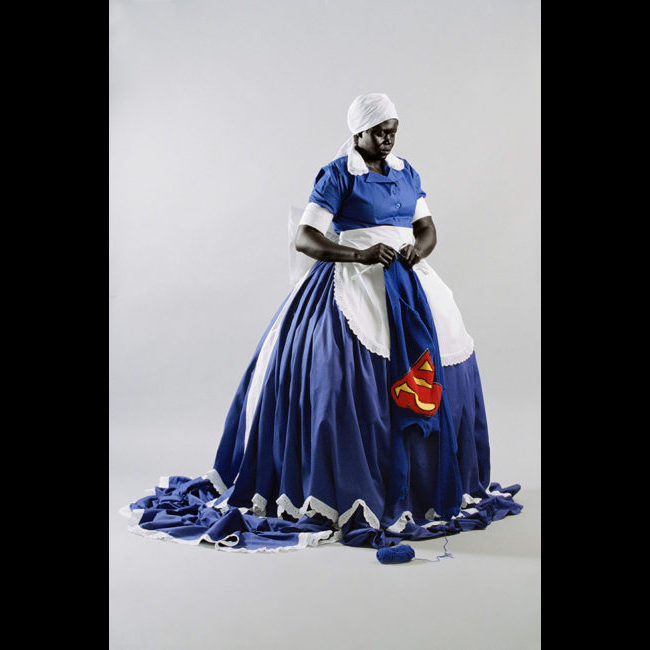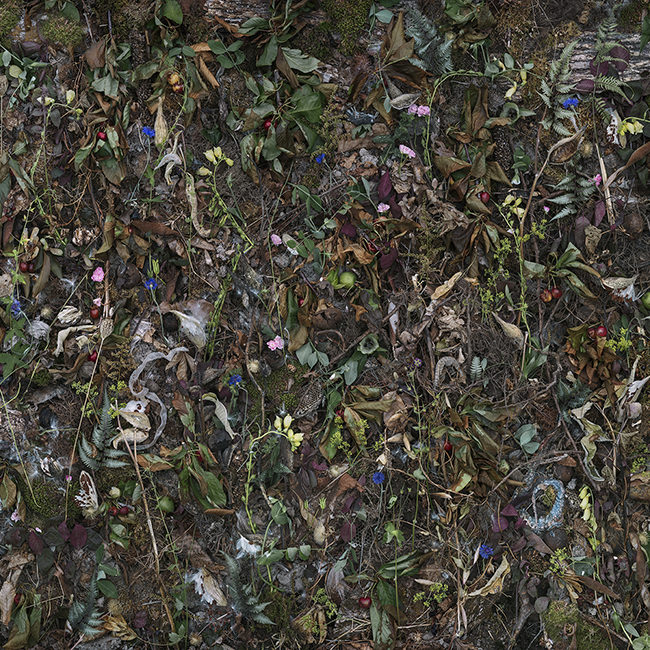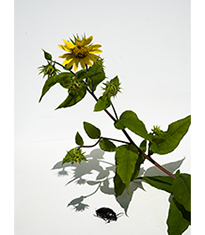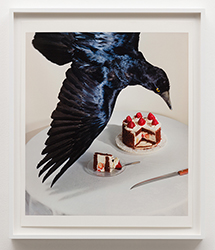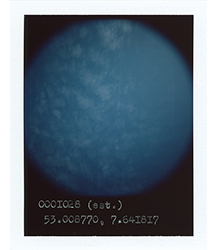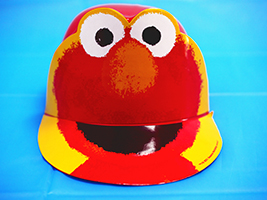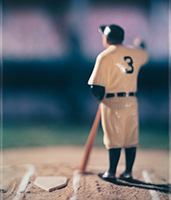Swiss photographers Jojakim Cortis and Adrian Sonderegger meticulously recreate famous photos using handmade wooden models, cardboard, paint, silicon and cotton wool, then photograph their creations. Their photos reveal parts of the studio where they fashioned their tableaux. Their new show at Bryce Wolkowitz Gallery, and their recently published book, Double Take, offer fun for fans of dollhouses, and will also intrigue anyone who thinks about the life of a photograph.
Though they have fashioned their own versions of the hoax image of the Loch Ness Monster and the controversial image of a Loyalist soldier by Robert Capa—which many critics have claimed was staged—Cortis and Sonderegger aren’t interested in debating the truthfulness of photography. In an interview included in the book, they tell curator William Ewing that when publications want to license one of their images for a story on hoaxes, they refuse. They are fascinated by icons of photographic history. In deconstructing and reconstructing them, they make us take a closer look at images that we thought we knew well.
The first step in recreating a two-dimensional photo is to render it in three dimensions. To remake Jacques Henri Lartigue’s best known image, for example, they fashioned a wooden model of a racecar, and placed it on a flat surface they had painted to depict shadows. Then they put cutout figures against the white backdrop to depict the slightly blurred onlookers in the background of Lartigue’s photo.
Once they’ve finished making a set, Cortis and Sonderegger photograph it—making a new, two-dimensional photo. But they shoot wide, to reveal hints about the making of the illusion. Their model of Neil Armstrong’s footprint on the moon is faithfully accurate, but on the edges of the frame we see a dustpan, scissors, wires and a lot of blown dust. In “Making of ‘Moon and Half Dome’ (by Ansel Adams 1960),” we see that they have placed model mountain on top of a table.
Though the iconic images they’re imitating captured fleeting moments, Cortis and Sonderegger have to make everything static. In their recreation of the image Henri Cartier-Bresson took near the Gare St. Lazare, the water doesn’t ripple and the man isn’t jumping: The model of the man hangs perfectly still just above a shiny plastic surface. Their painstaking work is analogous to the instantaneous snap of a shutter: It freezes a moment.
As curator Christian Caujolle notes in the book’s introduction, our lives are so inundated with images, “our primary experience of the modern world is no longer physical, but mediated through images.” When we think of the crash of the Hindenberg, we don’t think of dead crew members; we think of an old news photo. When we think of 9/11, our memories are more raw, but in looking at Cortis and Sonderegger’s image of a rectangular box with cotton wool billowing out, we think of the many news photos that have mingled with our memories of that day.
Cortis and Sonderegger, Caujolle writes, “have found just the right tone to encourage us to think about the nature of this illusory memory, without being either destructive or didactic.”
—Holly Stuart Hughes
“Cortis and Sonderegger: Icons”
Bryce Wolkowitz Gallery
through November 3
Double Take
Thames and Hudson
Text by Florian Ebner, Christian Caujolle, William A. Ewing
Related Articles
Toy Story
Tricking the Eye with Newspaper and String
Capturing Conflicts: Photographs of War by Robert Capa
